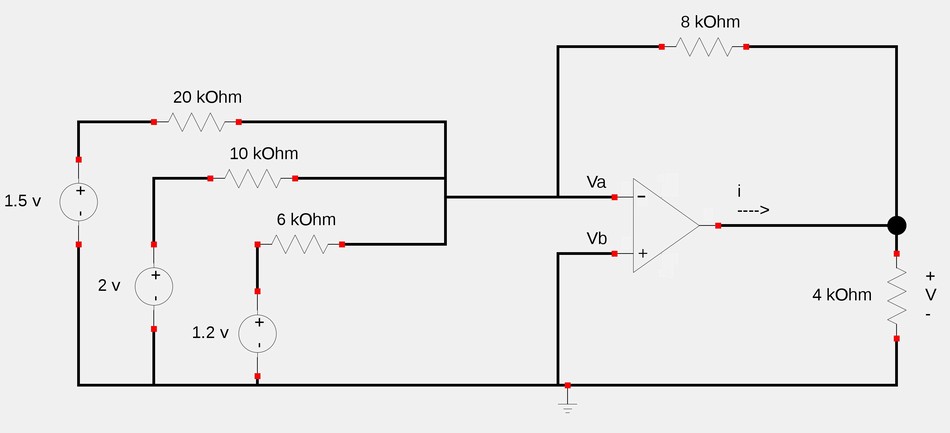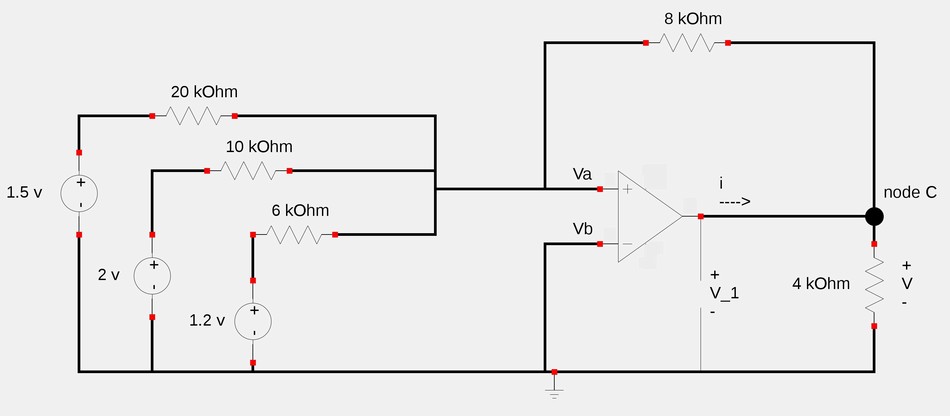Determine V and i for the following circuit:

Step 1: Calculate op-amp output voltage
Recall the definition for the output voltage of a summing amplifier:
$$V_o = - \Big[\frac{R_f}{R_1}V_1 + \frac{R_f}{R_2}V_2 + \frac{R_f}{R_3}V_3 \Big] $$
...and apply it to our circuit:

$$V_1 = - \Big[\frac{8}{20}(1.5) + \frac{8}{10}(2) + \frac{8}{6}(1.2) \Big] $$ $$ V_1 = -3.8 V$$ Since V1 and V are in parallel: $$V = V_1 = -3.8 V $$
Calculate "i" by applying Kirchoff's Current Law (KCL) at node C
Assume all currents are exiting the node: $$-i + \frac{V}{4000} + \frac{V - V_a}{8000} = 0 $$ $$i = \frac{-3.8}{4000} - \frac{3.8}{8000} $$
$$i = -1.425 \; mA $$
Let's take a look at another example:
Continue on to Summing Amplifier (example 2)...
